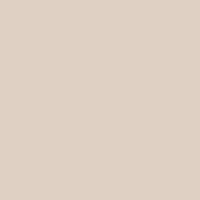Application
Depending on the application method we do not advise thinning Helmi furniture paints by more than 20%. To find thinning ratio relevant to your application method refer to the technical datasheet
Tikkurila's products are designed for spray and brush application, including airless, air-assisted and HVLP. Our industrial wood range has been formulated for spray application only.
Please refer to the technical data sheets for further details on individual products.
Akvi Top DS25 is a self-levelling paint, formulated to level out evenly over a surface as it dries, providing a smooth finish. It will give you a finer finish by reducing roller stippling and brush strokes.
When applying a self-levelling paint, it is important to apply enough product and also not overwork the material across the surface. Tikkurila products are highly flexible and have a tremendous ability to pull back naturally, removing the stipple effect and leaving a solid non textured surface.
When sprayed, the results with Akvi Top DS25 are particularly impressive.
Yes! The Helmi paint range is suitable for brush, roller, and spray application. When it comes to spraying, Conventional Spray Machines, Airless Spray machines, and Air-Assisted Spray Machines are all suitable. Each machine type has its own nozzle tip size and thinning percentage recommendations. For these specific details, check out the Technical Data Sheet found in the Product Attachments section of the product page online (in this case, titled Helmi 30 TDS).
Recommend uses for Optiva 5 include the painting of gypsum boards, gypsum, cement-lime plasters, decorative painting of concrete substrates as well as renovation of old coatings.
Masonry paint should not be applied to surfaces when the ambient temperature (or substrate temperature) is below 5 degrees and not higher than 25 degrees. The paint coating should be protected from rain for minimum 48 hours after coating so do not paint if there is a risk of rain during this period.
Avoid painting in full sun or on warm surfaces. For best results, always attempt to time the painting of a given elevation prior to exposure to direct sunlight.
There are conditions specific to your project that can affect this, but we would always recommend a minimum of two coats. Our paints have excellent coverage; they are formulated on a high-opacity base. Using a tinted primer will significantly help you achieve a full and accurate depth of colour, whilst also priming the surface underneath.
Depending on paint type choice, atmospheric conditions, and other variables, different paints can vary in dry time, however, for an interior wall paint in normal conditions the paint will be touch dry in approximately 1 - 2 hours. If painting more than one coat we recommend 2 - 4 hours between coats. Refer to the product detail pages to understand the dry time associated with each product.
Our paint can be applied using traditional brushes or rollers, depending on the desired final appearance. Rollers provide a smooth uniform finish on well-prepared walls; whereas paint brushes can be useful for edging and uneven surfaces. For further information about the application of each paint type, see the detailed product datasheets on individual product pages.
For water-based paints, use water and for oil-based paints, use white spirit or a specific solvent-based cleaner.
We would always say 1 month for water-based to allow the product to be fully cured to its maximum durability.
Before starting to paint, read the instructions for use on the product label and check the product safety data sheet. When painting we recommend you use protective gloves and goggles. In this way, you can avoid spattering the paint onto your hands and subjecting yourself to unnecessary skin contact.
If the room is being painted with water-borne interior products, such as wall and ceiling paints, or with low-emission M1 classified products, it can be used around 4–6 hours after painting. In the case of other water-borne paints or lacquers, avoid being in the room until the next day. Allergic and sensitive individuals should avoid being in freshly painted rooms for a bit longer period. Highly allergic and sensitive persons should consider carefully whether it might be a good idea to let someone else do the painting. However, if you do decide to do the job yourself, we recommend the use of low-emission M1 classified and eco-labelled products. Ensure adequate ventilation during drying; for example, open the window. However, bear in mind that the room temperature should not fall below the minimum temperatures given in the product specification.










